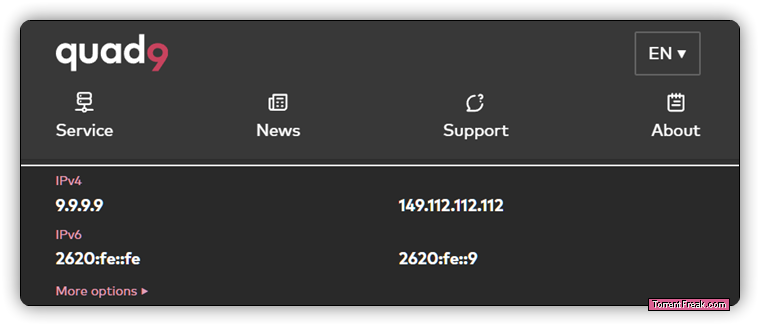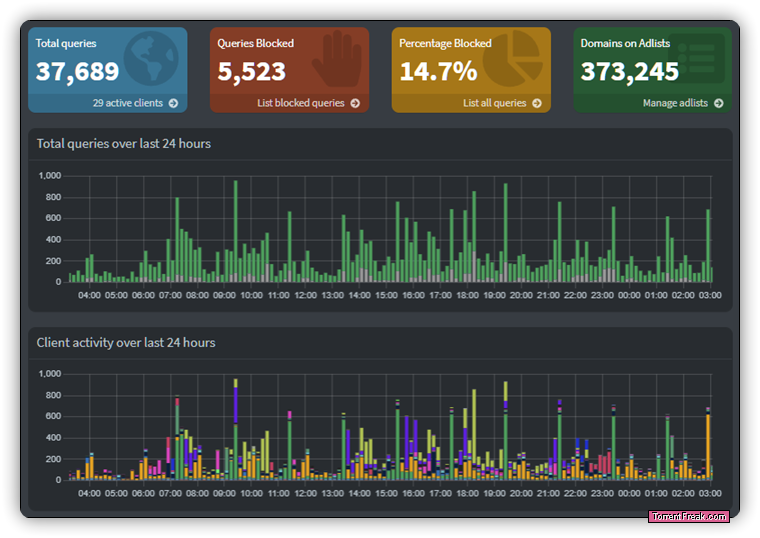 If it was possible to recall and then count every anti-piracy campaign targeted at the UK public since the dawn of the VCR, the answer would be of interest to us, because we have absolutely no idea.
If it was possible to recall and then count every anti-piracy campaign targeted at the UK public since the dawn of the VCR, the answer would be of interest to us, because we have absolutely no idea.
But maybe volume isn’t particularly important. Perhaps a better question would be this: Has an anti-piracy campaign targeting the public in the last 40+ years ever actually worked?
Those who guessed “yes” are absolutely right, well done. Those who guessed “no” are absolutely right too. There are no losers in this game because it’s all about framing.
No Anti-Piracy Campaign Has Ever Failed
Since anti-piracy campaigns cost money, it is incredibly rare for anyone to admit that their campaign didn’t work. It’s much more likely that an apparently unsuccessful campaign finds itself celebrated as the campaign that prevented things from getting even more out of hand than they already were. You see, while it’s always been about framing, it’s always been about timing too.
When lobbying the government to contribute to campaigns with funding from the public purse, that’s the perfect time to mention the threats; to specific industries, employment, the economy in general, public order, crime waves, terrorism, whatever fits the mood of the day. When the campaign is done, pick out the positives, tell everyone that the money was well spent, thank the government, and then say
nothing
. Just wait.
In time, probably just a few months, a couple of gentle mentions of how piracy keeps evolving is a great way not to confront sources of funding with embarrassing news of failure. The campaign itself was a success, it was everything else that changed.
What never really changes is the underlying sense of threat. The threat of a looming catastrophe that, to date, has never actually happened. Not because a catastrophe was never likely, but because everyone pulled together to avoid one. In much the same way as everyone needs to work as a team to avoid whatever threats are coming up next.
Threats to the Public
For the past several months, an anti-piracy campaign has been running in the UK. On one hand, the
BeStreamWise campaign
aims to sensitize consumers of illicit IPTV services to various threats; the threat of being scammed, for example, or even defrauded. When dealing with criminals, anything is possible.
The threat of identity theft shouldn’t be ruled out either but the really important thing is to allow the public to a) soak up the threat b) feel the building anxiety and sense of impending doom and c) ditch illegal services before something terrible happens. When everyone is out of danger, d) click here to subscribe to one of our legal and
safe
subscription services.
The Threat of Being Caught & Sent to Prison
On the campaign website, BeStreamWise wisely steers clear of the potential legal repercussions of using pirate services. In anti-piracy, however, the presence of legal threats is an opportunity rarely missed.
The apparently separate but coordinated media campaign being conducted through the UK tabloids, which really stepped up a gear in November and has barely stopped since, has been running in parallel to the BeStreamWise campaign.
Despite appearing to have similar goals, the BeStreamWise campaign only gets a handful of mentions in at least dozens of articles. Instead, the Federation Against Copyright Theft often responds to questions raised in the articles, which all carry exactly the same message, as the sample below shows.
United threat to safety

In much the same way that millions of people in the UK were convinced that if they play the lottery “It Could Be You!”, it seems that the goal here is to make the odds of prosecution seem just as convincing.
After seeing over 50 of these articles published since late November in a broad range of national and local online news outlets, we used various tools to analyze their text and AI to identify the most prominent keywords. Across all articles, keyword similarity was rated at 82%, which is extraordinary when there’s no common news event underpinning any of the articles.
A couple of exceptions aside, sentiment was rated negative, as expected, with the most popular keywords across all articles shown below. The situation as portrayed seems……..a little
threatening
perhaps?
Nobody should be offended when broadcasters and other rightsholders defend their products from piracy. When IPTV providers, resellers and everyone else in the supply chain get arrested and, horror of horrors, find themselves being privately prosecuted, that is literally the worst thing that can possibly happen.
People who consume pirated content have their own balancing act to consider. It’s not difficult to imagine that someone, somewhere, has decided that scare tactics amplified through the media – no, more than that,
completely reliant on the media
– is a great way tip the balance in the right direction.
Bottom Line: Do Scared People Pirate Less?
It’s difficult to say whether fear has ever played a part in reducing piracy, but one thing is certain: nobody ever scared anyone into being a loyal customer; the effect is temporary at best, counterproductive and completely ineffective at worst.
A new study reveals that men (also a focus of BeStreamWise in respect of live sports) are not only primed to immediately reject negative outside messaging, but their response significantly exacerbates the same problem threat messaging aims to reduce.
The study,
Psychological Reactance to Anti-Piracy Messages Explained by Gender and Attitudes
, was published last month. According to its authors, it “uses evolutionary psychology as a theoretical framework to examine whether messages based on real-world anti-piracy campaigns cause reactance and whether this effect is explained by gender and pre-existing attitudes.”
Threats Could Make Matters Worse
In summary, the researchers exposed adult participants to the messaging contained in three previous, real-life anti-piracy campaigns.
The first,
Get It Right (From a Genuine Site)
, carried prosocial messaging, while
Crimestoppers (CrimeStoppers-uk.org)
and
Graduated Response
(French Three-Strikes scheme)
provided the threatening messaging. A control group received no anti-piracy messaging at all.
“The results indicate that the prosocial message has no significant effect, neither causing reactance nor influencing a decrease in piracy for either gender or attitude group,” the researchers write.
“The threatening messages, in particular
Crimestoppers
which emphasizes the risk of computer viruses, had a polarizing effect on the group with favorable attitudes towards piracy. Men with favorable attitudes towards piracy reported an increase, and women with favorable attitudes towards piracy reported a decrease in piracy intentions.”
“The results support our evolutionary theoretical proposition that reactance to messages is adaptive, with men being more sensitive to threats to freedom by external forces than women.”
The chart above shows that females with favorable attitudes towards piracy responded positively to threats. However, men with the same favorable attitudes towards piracy responded to all types of anti-piracy messaging with a significant increase in their motivation to pirate.
Most pronounced is the 30%+ increase in the ‘Crimestoppers Group’ which may have implications* for the current BeStreamWise campaign. If nothing else, they share almost identical messaging.
Crimestoppers (Threatening Message 2)
The communication was delivered by crime reduction charity Crimestoppers (crimestoppers-uk.org) and funded by film industry trade body BASE (British Association of Screen Entertainment). The campaign focused on the individual’s risk of computer viruses, identity fraud, money/data theft and hacking, using precise numbers of cases reported to legitimize their claims.
After four decades of anti-piracy campaigns that have failed to scare pirates into compliance, and 15 years of ISP blocking measures that have mostly failed to render pirate services non-functional, a solution to the problem seems more elusive than evere.
Since no anti-piracy companies believe their market is on the brink of collapse, confidence must be high that the same strategies that have always fueled the market will long continue to do so. That might be the clearest signal yet that something needs to change.
Whitman, K., Murad, Z. & Cox, J. Psychological Reactance to Anti-Piracy Messages explained by Gender and Attitudes. J Bus Ethics (2024).
https://doi.org/10.1007/s10551-023-05597-5
Summary available
here
*BASE is a member of the BeStreamWise campaign.
From:
TF
, for the latest news on copyright battles, piracy and more.
 chevron_right
chevron_right















